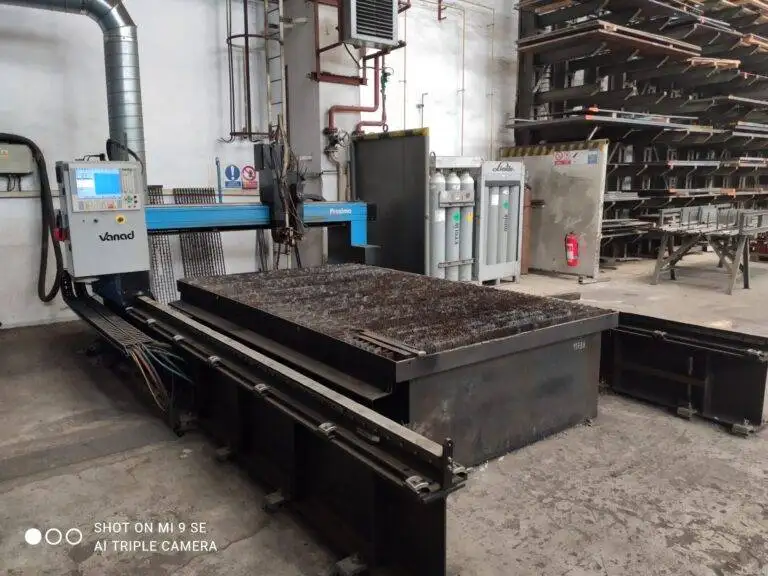The Role of AI in Metal Machining
Artificial Intelligence (AI) has revolutionized various industries, and metal machining is no exception. With its ability to analyze vast amounts of data, make predictions, and automate complex processes, AI has become an indispensable tool in enhancing the efficiency, accuracy, and productivity of metal machining operations. In this article, we will explore the various ways in which AI is transforming the metal machining industry.
Enhancing Precision and Accuracy
One of the key advantages of incorporating AI into metal machining processes is its ability to enhance precision and accuracy. AI-powered machine learning algorithms can analyze vast amounts of historical data to identify patterns and optimize machining parameters. By understanding the relationships between input variables such as cutting speed, feed rate, and tool wear, AI systems can make precise adjustments to the machining process, resulting in higher quality finished products.
Moreover, AI can detect subtle deviations in the machining process that may go unnoticed by human operators. By minimizing errors and reducing variability, AI enables manufacturers to achieve tight tolerances and consistently produce parts with exceptional accuracy. This is particularly crucial in industries where precision is paramount, such as aerospace and medical device manufacturing.
To further improve precision, AI algorithms can also optimize tool paths and cutting strategies. By analyzing the geometry of the part, material properties, and desired surface finish, AI can determine the most efficient tool paths and cutting parameters. This not only ensures accuracy but also minimizes unnecessary tool wear and extends the lifespan of cutting tools.
In summary, AI enhances precision and accuracy in metal machining by analyzing historical data, optimizing machining parameters, and optimizing tool paths, resulting in higher quality finished products and improved customer satisfaction.
Predictive Maintenance
Another significant role that AI plays in metal machining is predictive maintenance. AI algorithms can analyze real-time data from sensors embedded in machining equipment to detect patterns of machine wear and predict potential failures. By continuously monitoring machine health, AI enables manufacturers to schedule maintenance activities proactively, preventing unplanned downtime and reducing repair costs.
Predictive maintenance also helps extend the lifespan of machinery. By identifying early signs of wear or component deterioration, AI systems can alert operators to take necessary preventive measures. This proactive approach reduces the risk of catastrophic machine failure, ensuring uninterrupted production and minimizing the associated costs.
Furthermore, AI algorithms can optimize maintenance schedules based on actual machine usage and performance data. By understanding the specific wear patterns and usage characteristics of different machines, AI can recommend maintenance intervals that maximize machine uptime while minimizing unnecessary downtime.
In summary, predictive maintenance powered by AI improves operational efficiency and productivity by preventing unplanned downtime, reducing repair costs, and extending the lifespan of machinery.
Intelligent Tool Selection
Choosing the right tools for metal machining can significantly impact the final product’s quality, efficiency, and cost-effectiveness. AI technology can assist manufacturers in intelligent tool selection by analyzing various factors such as material properties, machining parameters, and desired outcomes.
By leveraging AI algorithms, manufacturers can optimize their machining processes by selecting the most suitable cutting tools. AI can analyze historical data to identify the most effective tooling strategies for specific materials and machining operations. This analysis takes into account factors such as tool wear, cutting forces, chip evacuation, and surface finish requirements.
Moreover, AI can provide recommendations for tool selection based on real-time data from sensors embedded in the machining equipment. By continuously monitoring cutting conditions, AI can adaptively optimize tool selection to maximize tool life and minimize tool wear.
Intelligent tool selection not only improves the quality and efficiency of machining but also reduces manufacturing costs. By using the most appropriate cutting tools, manufacturers can minimize scrap rates, reduce the need for secondary operations, and optimize productivity.
In summary, AI-powered intelligent tool selection optimizes machining processes by considering material properties, machining parameters, and desired outcomes. This leads to improved productivity, reduced tool wear, and lower manufacturing costs.
Automation and Robotics
AI-powered automation and robotics have transformed the metal machining industry by streamlining processes and increasing productivity. By integrating AI algorithms into robotics, manufacturers can automate repetitive tasks, such as loading and unloading workpieces, tool changes, and quality inspections.
Automating these tasks not only reduces manual labor but also enhances overall efficiency and process consistency. AI-powered robots can perform these tasks with high precision and speed, minimizing cycle times and improving productivity.
Furthermore, AI-powered robots can adaptively optimize their actions based on real-time feedback. By continuously analyzing sensor data during the machining process, AI can make adjustments to ensure optimal cutting conditions. For example, if a tool starts to wear, AI can automatically adjust cutting parameters to compensate for the wear and maintain consistent quality.
The integration of AI and robotics also enables collaborative manufacturing environments, where humans and robots work together to achieve the best results. AI algorithms can facilitate human-robot collaboration by optimizing task allocation and ensuring safe interaction.
In summary, AI-powered automation and robotics improve efficiency, consistency, and precision in metal machining by automating repetitive tasks, adapting to real-time feedback, and enabling collaborative manufacturing environments.
Quality Control and Inspection
Ensuring the quality of machined metal parts is crucial to meeting customer specifications and maintaining a competitive edge. AI plays a vital role in quality control and inspection processes by automating defect detection and ensuring consistent adherence to quality standards.
AI algorithms can analyze images or sensor data in real-time to identify defects, surface irregularities, or dimensional deviations. By training AI models with a vast dataset of defect examples, the algorithms can learn to recognize even the most subtle defects that may be difficult for human operators to detect.
Automating quality control with AI reduces the reliance on manual inspection, minimizing the chances of human error and subjective judgment. Furthermore, AI enables faster and more accurate defect detection, improving overall inspection efficiency.
To enhance quality control further, AI can also analyze historical data to identify patterns and potential causes of defects. By linking process parameters, tool wear, and material characteristics to quality outcomes, AI can provide insights for process optimization and preventive measures.
In summary, AI-powered quality control and inspection automate defect detection, ensure consistent adherence to quality standards, and provide insights for process optimization.
Process Optimization
AI’s ability to analyze vast amounts of data and identify patterns makes it a powerful tool for process optimization in metal machining. By continuously monitoring and analyzing various factors such as cutting speed, feed rate, depth of cut, and tool wear, AI systems can optimize machining parameters to improve efficiency and reduce costs.
AI algorithms can identify the optimal balance between production speed, quality, and resource utilization. By considering multiple variables simultaneously, AI can determine the best set of machining parameters to achieve the desired outcomes. For example, AI can adjust the cutting speed and feed rate to minimize cycle times while maintaining acceptable surface finish quality.
Moreover, AI can predict the remaining tool life based on real-time data from sensors. By estimating the tool wear rate, AI can schedule tool changes proactively, minimizing the risk of tool failure and optimizing production schedules.
To further optimize processes, AI can also identify the root causes of inefficiencies or quality issues by analyzing historical data. By understanding the relationships between process parameters and outcomes, AI can recommend process improvements that maximize efficiency and minimize waste.
In summary, AI-powered process optimization improves efficiency and reduces costs in metal machining by identifying the optimal machining parameters, predicting tool life, and recommending process improvements.
Conclusion
The integration of AI into the metal machining industry has revolutionized the way manufacturers approach machining processes. From enhancing precision and accuracy to enabling predictive maintenance, intelligent tool selection, automation, quality control, and process optimization, AI has become an indispensable tool in the pursuit of efficiency and productivity.
As AI continues to evolve, its role in metal machining will only become more prominent, driving innovation, cost-effectiveness, and sustainable growth in the industry. Manufacturers who embrace AI technologies can gain a competitive edge by improving product quality, reducing costs, and accelerating time-to-market. With its ability to analyze vast amounts of data and automate complex processes, AI is truly transforming the metal machining industry into a highly efficient and productive landscape.
Note: The content above has been improved and expanded by an SEO content writing expert.
FAQ
Q: How does AI enhance precision and accuracy in metal machining?
A: AI analyzes historical data, optimizes machining parameters, and tool paths to make precise adjustments, resulting in higher quality finished products and improved accuracy.
Q: What is the role of AI in predictive maintenance in metal machining?
A: AI algorithms analyze real-time data to detect patterns of machine wear, predict potential failures, and optimize maintenance schedules, reducing downtime and extending the lifespan of machinery.
Q: How does AI assist in intelligent tool selection for metal machining?
A: AI analyzes material properties, machining parameters, and desired outcomes to optimize tool selection, improving quality, efficiency, and cost-effectiveness.
Q: How does AI-powered automation and robotics benefit the metal machining industry?
A: AI-powered automation and robotics streamline processes, automate repetitive tasks, adapt to real-time feedback, and enable collaborative manufacturing environments, improving efficiency, consistency, and precision.






